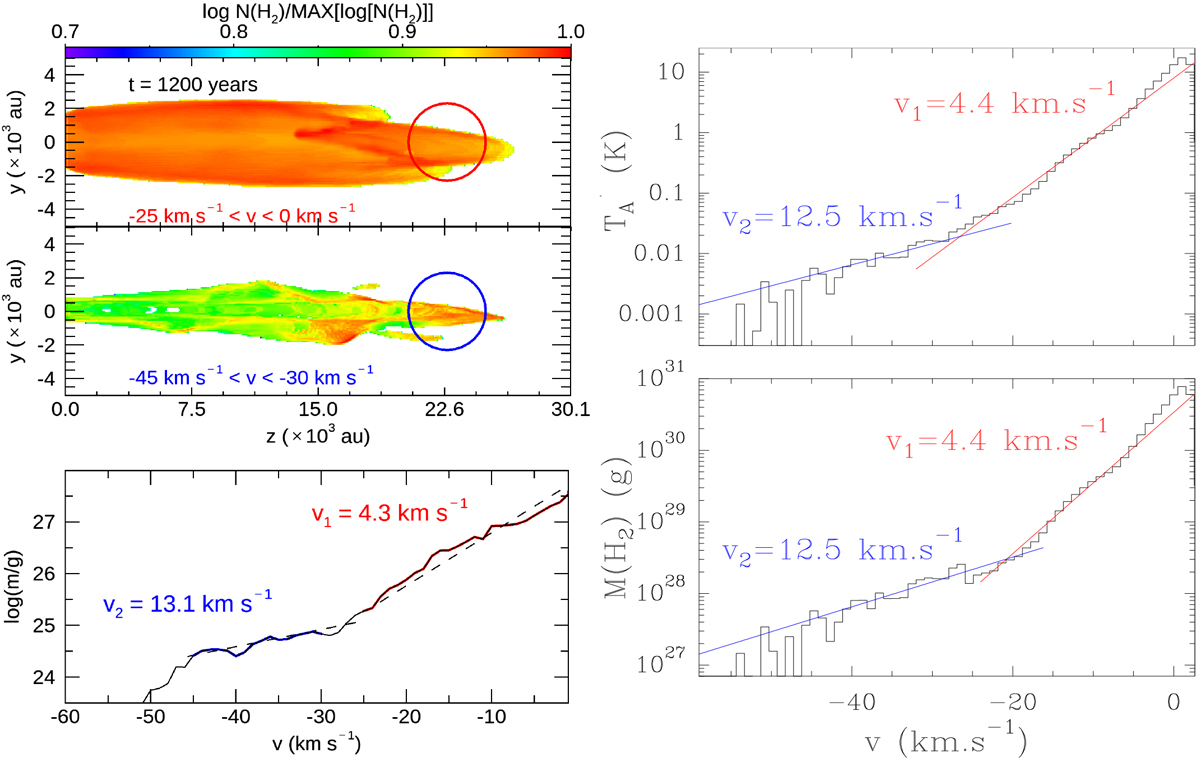Fig. 11

Left: model DR_P at t = 1200 yr under an inclination of 10° (towards theobserver). Top: map of H2 column density for jmix = 0.9, in the velocity intervals –[1–25 km s−1] (top) and –[30–45 km s−1] (bottom). The 5000 au aperture used to extract the mass–velocity distribution is drawn by a circle. Bottom: molecular mass–velocity distribution extracted at position A4. We have superposed the best exponential fits m(v) ∝exp(−v∕vi) to the components associated with velocity intervals –[1–25 km s−1] (red) and –[30–45 km s−1] (blue). The exponent value vi is given for both velocity intervals. Right: ASAI observations of L1157-B1. Top: intensity–velocity distribution obtained in the CO J = 2–1 towards shock position B1 in an aperture of about 4000 au (11′′ at the distance to the source). The line profile is fitted by a linear combination of two exponential functions g1 ∝ exp(−v∕12.5) (blue), g2 ∝ exp(−v∕4.4) (red) (from Lefloch et al. 2012). Bottom: associated mass–velocity distribution, adopting a standard CO-to-H2 abundance ratio and the excitation conditions derived by Lefloch et al. (2012) for the velocity components g1 and g2.
Current usage metrics show cumulative count of Article Views (full-text article views including HTML views, PDF and ePub downloads, according to the available data) and Abstracts Views on Vision4Press platform.
Data correspond to usage on the plateform after 2015. The current usage metrics is available 48-96 hours after online publication and is updated daily on week days.
Initial download of the metrics may take a while.


